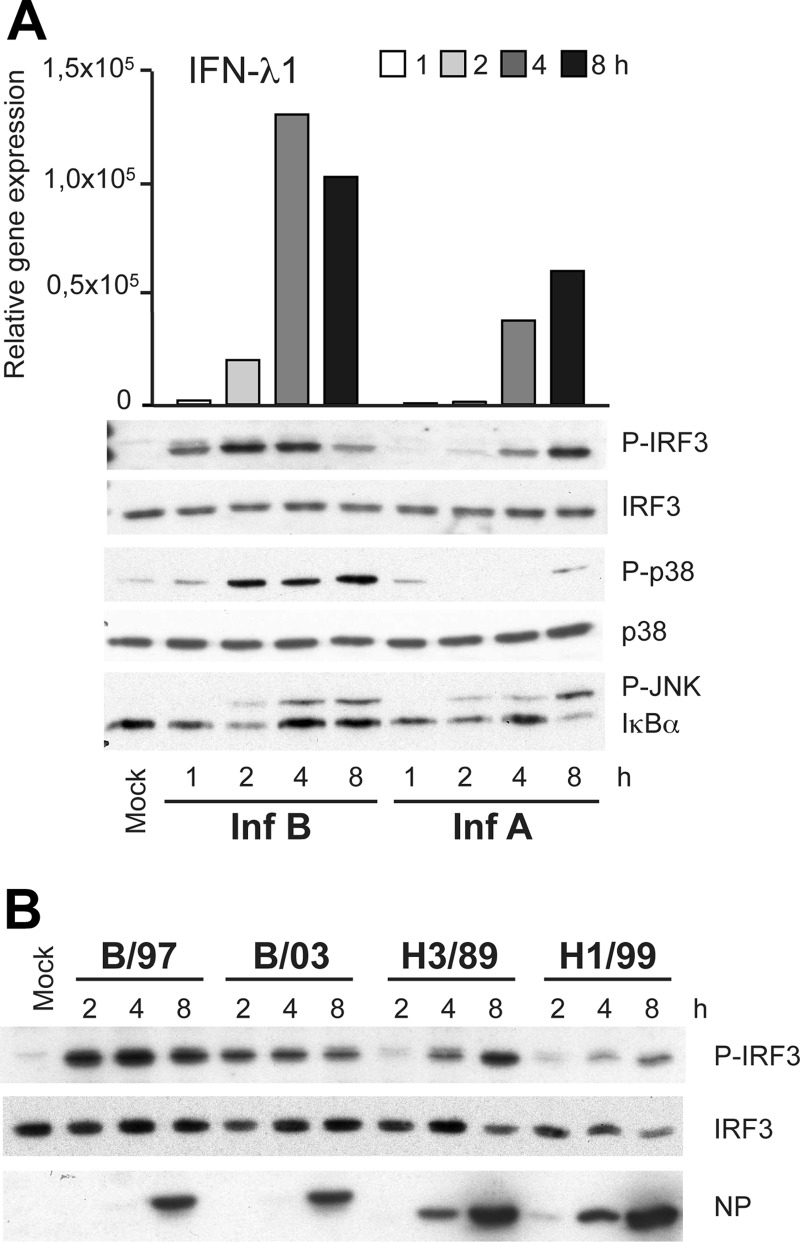Fig 4.
The early influenza B virus-induced IFN response is mediated by IRF3 activation. (A) moDCs were infected with influenza A/Beijing/353/89 and B/Shangdong/7/97 viruses (MOI of 5), cells were collected at different time points after infection, and total cellular RNA or whole-cell lysates were prepared. Virus infection-induced IFN-λ1 gene expression (top) is shown in relation to the immunoblot analysis of phosphorylated forms of IRF3, p38, and JNK or IκBα. Total cellular IRF3 and p38 protein levels were analyzed to control for equal loading. The data are representative of three independent experiments. (B) Whole-cell lysates from moDCs infected with influenza B/Shandong/7/97, B/Jiangsu/10/03, A/Beijing/353/89 (H3N2), and A/New Caledonia/20/99 (H1N1) viruses at an MOI of 5 were collected at the 2-, 4-, and 8-h time points. Cellular proteins were separated on 10% SDS-PAGE gels, and immunoblot analysis of P-IRF3, IRF3, and influenza A and B virus nucleoproteins (NP) was carried out.

